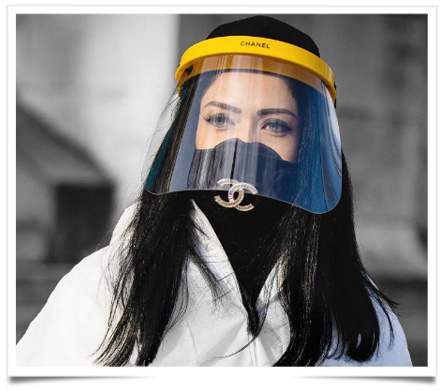 These days, when my family ventures into town to pick up groceries, we see people wearing a rainbow of creative face masks. The facial coverings are a practical way to stem to spread of COVID-19, but they also reflect our personalities and outlook on life.
These days, when my family ventures into town to pick up groceries, we see people wearing a rainbow of creative face masks. The facial coverings are a practical way to stem to spread of COVID-19, but they also reflect our personalities and outlook on life.
On my Instagram feed, people are wearing masks made of everything from repurposed designer hand bags to aprons. In 2020, masks aren’t just medical devices; they’re fashion.
According to Valerie Steele, director and chief curator of The Museum at the Fashion Institute of Technology, people have used protective facial gear throughout history to send a message to those around them. In the 1600s, doctors wore masks with long, pointed beak-like extensions at the nose, which could be stuffed with incense, since people believed that the plagues were transmitted through foul smells. “They clearly didn’t work,” Steele says.
In the 19th century, when scientists discovered germs on dust particles, wealthy women in Paris wore lace veils to protect themselves from particles circulating on the busy streetsparticularly during cholera outbreaks.
The widespread wearing of masks is not likely to go away anytime soon. Epidemiologists say that we should be prepared for future pandemics. Moreover, we are likely to face other catastrophes in the era of climate change such as fires that will require masks. Masks may be the fashion for a long time to come.
